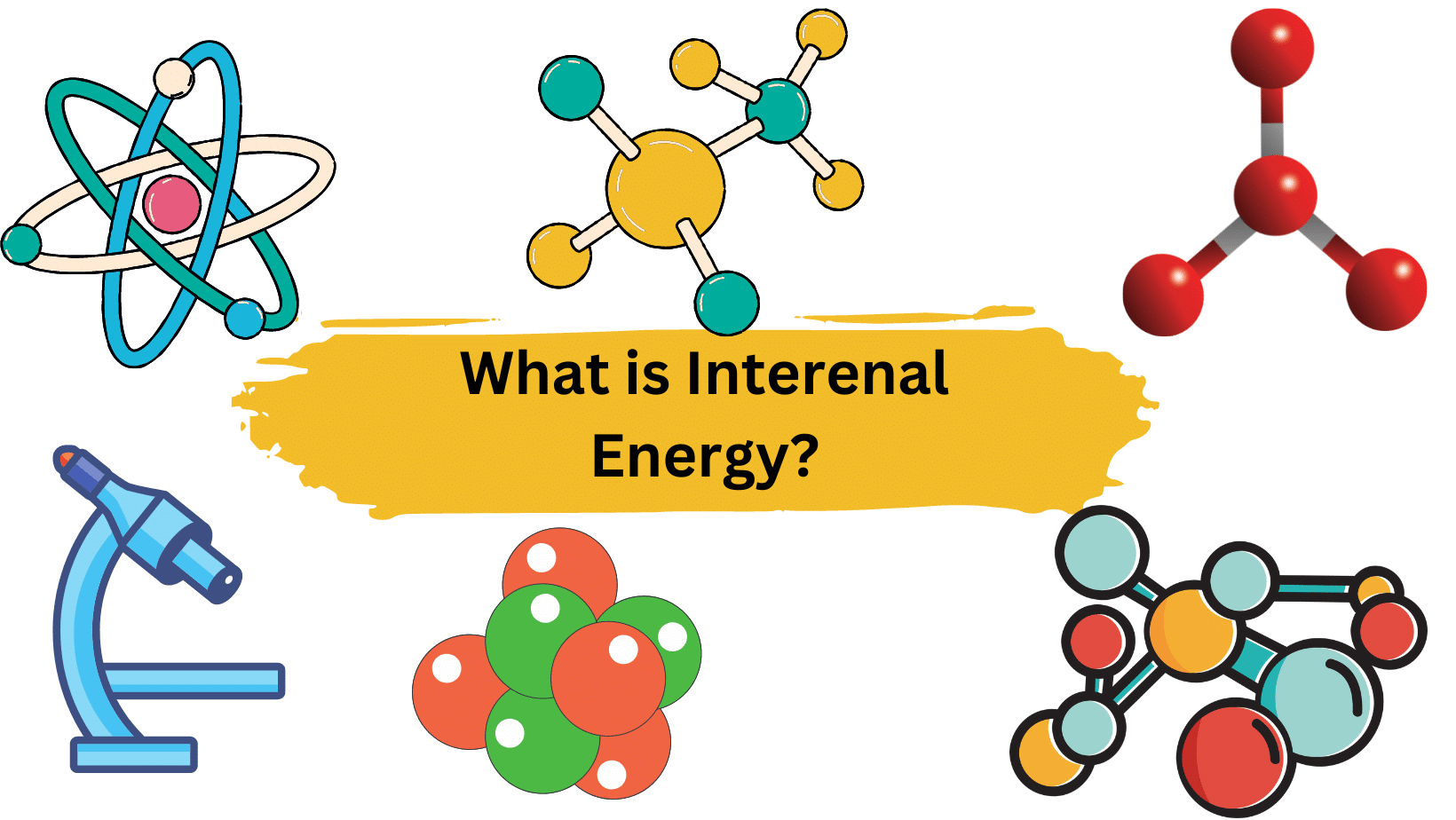Energy definition: Energy is defined as the ability to do work is called energy and work is moving something against a force, for instance, gravity.
Simply put, energy is the ability to do work. When we work on something, some of our energy is transferred to it. When energy is transferred, the object being worked on gains energy.
Some examples of different types of energy are listed below:
Table of Contents
Units of Energy
The SI unit of energy is the joule (J). or 1 kJ = 1000 J.
Concept of Energy in Simple Terms
In simple terms, energy is a property that allows things to happen or to change. It can take many different forms, such as heat, light, motion, or electricity, and it can be stored in objects or transferred from one object to another.
For example, a rolling ball has energy because of motion, and a heated pot has energy because of heat. When you push a swing, you transfer some of your energy to the swing, which starts moving. When you turn on a light bulb, electrical energy is converted into light and heat.
In general, energy is the ability to do work, which means to cause a change in an object’s position, shape, temperature, or some other physical property. Energy is a crucial concept in physics, as it helps us understand and explain a wide range of natural phenomena, from the motion of planets to the behaviour of subatomic particles.
Here are some examples of energy that might help to understand the concept:
- Solar energy: The energy from the sun that can be used to produce electricity or heat homes.
- Kinetic energy: The energy of motion, such as a spinning merry-go-round or a bouncing ball.
- Thermal energy: Heat energy, such as in a cup of hot chocolate or a warm summer day.
- Chemical energy: The energy stored in food or fuel, such as the energy released when a piece of wood is burned.
- Electrical energy: The energy that flows through wires and powers things like lights and televisions.
- Sound energy: The energy that travels through the air and makes things vibrate, such as when you hear music or someone’s voice.
- Mechanical energy: The energy of moving objects, such as a windmill turning or a see-saw going up and down.
Kinetic Energy and Potential Energy
Science has classified energy into two main forms: kinetic energy and potential energy.
Kinetic energy is the energy that a moving object has due to its motion. The faster an object moves, the more kinetic energy it has. The kinetic energy formula of a moving object equals one-half the product of its mass, and the square of its velocity.
Potential energy is the energy that an object has due to its position. If the object is lifted straight up at a steady speed, then the force (F) required to lift it to the height (h) is equal to its weight (mg).
In other words, when an object is lifted to a higher elevation, work is done on it and the energy transferred is stored; the quantity of energy stored is mgh. This stored energy is gravitational potential energy with the relation of w =mg.
Law of Conservation of Energy
According to the law of conservation of energy, energy cannot be created or destroyed. It can, however, be transformed from one form to another. When all forms of energy are considered, the total energy of an isolated system remains constant.
For instance, When the pendulum briefly stops at the top of its swing, its kinetic energy is zero, and the entire system’s energy is in potential energy. The potential energy is converted back into kinetic energy when the pendulum swings back down. The sum of potential and kinetic energy is constant at all times.
What is Work?
Work is defined as the force exerted multiplied by the distance over which it is exerted. In equation form, Work (joules) = force (newtons) x distance (meters), where a joule is a unit of work. One of the simplest examples of work is lifting a weight from the ground and putting it on a shelf.
The Unit of work is the joule. one Joule is the amount of work done when a force of 1 Newton is applied over a distance of 1 meter.
Joule = N.m
Joule= kg.m2/sec2
Work-Energy Theorem
Work-energy theorem refers that the work done by the sum of all forces acting on an object equals the change in kinetic energy of the object (or) the net work done on a system equals the change in kinetic energy. Check the derivation of the work-energy theorem.
Work done = K.Ef-K.Ei (Network done = change in Kinetic Energy)
Renewable and Non-Renewable Energy
There are various energy sources, which can be divided into two broad categories:
- Renewable energy sources
- Nonrenewable energy
The distinction between these two types of resources is that renewable resources can replenish themselves naturally, whereas nonrenewable resources cannot. This means that nonrenewable resources are finite and cannot be used indefinitely.
Renewable resources include timber, wind, and solar while nonrenewable resources include coal and natural gas [reference].
Summary
- The ability to work is called energy.
- Energy, according to the law of conservation of energy, cannot be created or destroyed. It can, however, be transformed from one form to another. When all forms of energy are considered, the total energy of an isolated system remains constant.
- Work-energy theorem states that the work done by the sum of all forces acting on an object equals the change in kinetic energy of the object.
Related Topics
Mechanical Energy Formula & Examples
Elastic Potential Energy| Definition, Formula, and Examples
Energy-The Ability to do Work
Light Energy| Definition, and Properties
Thermal Energy Equation
Can Work Be Negative?| Easy Explanation & Examples
Frequently Asked Questions
Some of the frequently asked questions are given below
1. Can force be negative?
To answer the question “can force be negative”, we need to understand the concept of positive direction and negative direction.
- Force is negative If the applied force is in opposite direction to the displacement of the moving object.
- Forces that are aimed at the right are usually called positive forces.
- Forces that are aimed to the left are usually said to be in a negative direction.
2. How energy and work are related?
In physics, the ability to do work is energy. It can take many forms, including potential, kinetic, thermal, electrical, chemical, radioactive, and others. Furthermore, there is heat and work—that is, energy in the transmission of energy from one body to another.
3. Momentum equation?
The momentum equation is simply the product of the mass and velocity of a moving object.
If an object is moving and has mass, then it has momentum.
The momentum of a body refers to the quantity of motion a body possesses due to its mass and velocity.
4. Can displacement be negative?
Displacement can be negative since it is a vector variable that depends on magnitude and direction. The negative sign just indicates the direction. Check the full article “can displacement be negative?”.
5. What is energy density in physics?
The quantity of energy stored in a specific system or region of space per unit volume is referred to as energy density in physics.
6. How can we increase the efficiency of the Otto cycle?
The efficiency of an Otto engine can be improved by running it on lean fuel (which consumes additional air) or by increasing the compression ratio.
7. Why is thermal mass important for passive solar?
Thermal mass is an important and complementary component of passive solar design. Thermal mass refers to a material’s ability to receive, store, and release heat energy from the sun.
7. Can energy be negative? (Advanced studies topic)
In physics, energy is a scalar quantity and is usually considered to be positive. Negative energy is not a commonly used concept in physics, but it can be discussed in some specific contexts.
In quantum mechanics, negative energy states can be associated with the concept of “vacuum fluctuations,” where particles can momentarily appear and disappear in a vacuum. Another example is in the theory of general relativity, where negative energy density can be associated with the presence of gravitational fields.
It’s important to note that negative energy is not the same as an absence of energy or zero energy. It is a concept that has well-defined mathematical and physical meaning in certain contexts, but its interpretation and usage can be quite technical and requires a good understanding of the underlying theory.
8. Are work and energy in are same quantities in Physics?
Work and energy are related but distinct concepts in physics.
Work is defined as the amount of energy transferred to or from an object as a result of a force acting on it over a distance. Mathematically, work is calculated as the product of force and distance in the direction of the force.
Energy, on the other hand, is a property of an object that allows it to do work. Energy can be stored in an object and can be transferred from one object to another. There are many different forms of energy, such as thermal, kinetic, potential, and electrical energy.
So, to summarize, work is the transfer of energy, and energy is the ability to do work. When you push a lawnmower, for example, you do work on it, transferring energy to it and allowing it to do work by cutting grass. When a batter hits a home run, he transfers energy to the baseball, giving it the energy it needs to travel a long distance.
More Interesting Topics
How Many Cups in a Gallon?
The Density of Water lbs/U.S gal
Momentum Equation| Definition and Examples
Stress in Physics| Definition and Easy Examples
How Much Does a Gallon of Water Weigh?
Electromagnetic Force- An Overview
- BCl3 Lewis Structure in four simple steps - November 1, 2023
- PH3 Lewis Structure in four simple steps - October 8, 2023
- PF3 Lewis structure in four simple steps - September 24, 2023



